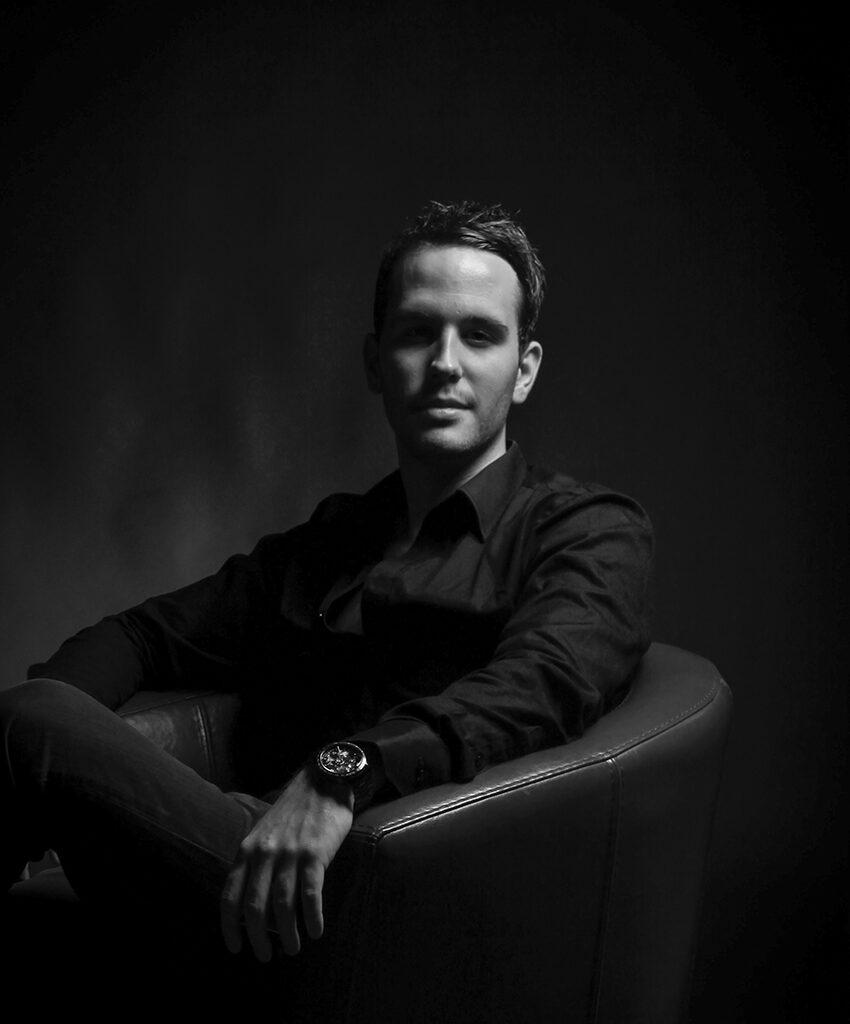Have you ever wondered what lies behind professional photography that tell stories, evoke emotions, and freeze moments in time? A lot of people think that anyone with a camera can do a great job, whether it’s capturing a wedding, taking product shots, freezing a moment at a sports event, or showcasing the beauty of a building. But the truth is, there’s a huge difference between just taking pictures and understanding the craft of photography.
For example, being a real estate photographer isn’t the same as being an architectural photographer. Real estate photography focuses on making spaces look inviting for potential buyers, while architectural photography is about capturing the design and essence of a building. Each area needs its own set of skills and a deep understanding of what makes each shot special.
The misconception of camera ownership
Photography as a craft extends far beyond the mere possession of a camera. It’s an art that requires technical knowledge, an understanding of light and composition, and, most importantly, the ability to tell a story through imagery. The common assumption that anyone with a camera can be a photographer diminishes the years of practice, learning, and the innate talent that professionals bring to their work. It’s akin to saying owning a paintbrush makes one an artist. True photography is about seeing the world differently, capturing emotions, and tells stories through visuals, a skill that is honed over time.
A quick-look on specific photography niches
When I first started using my camera skills professionally, I realized the differences between specialized niches, each demanding unique skills and perspectives. It’s not just about knowing how to use a camera; it’s about mastering specific areas with deep knowledge, an eye for detail, and a real passion for the subject. Here’s some key points that I have picked up over the years while working in the following niches:
- Wedding Photography: Capturing fleeting, emotional moments under pressure.
- Product Photography: Highlighting an item’s best features with meticulous lighting and composition.
- Sports Photography: Needing an excellent sense of timing and movement to freeze dramatic moments.
- Real Estate Photography: Ability to make a place look like ‘home’ and big without relying on a wide lens.
- Architectural Photography: Showing the beauty and intricacies of structures through angles and light.
- Studio Photography: Controlling the environment to create specific moods or themes with lighting, backdrops, and props.
Each niche is a world unto itself that requires you to develop strong understanding of your subject matter and a unique creative vision to succeed. This underscores the difference between simply taking pictures and the artistry of professional photography.
Understanding a photographer’s work
Foundational skills in professional photography
In professional photography, foundational skills serve as the cornerstone for every photographer’s career. Technical knowledge is paramount, encompassing everything from the intricacies of camera settings to the nuanced understanding of lighting and composition. Alongside technical prowess, an artistic vision is what enables a photographer to see the extraordinary in the ordinary, to capture moments and emotions that might otherwise go unnoticed.
Post-processing skills further distinguish professional work, allowing photographers to polish their images to match their creative intent precisely. These skills combined form the essential toolkit for any aspiring professional photographer, setting the stage for a successful career in the field.
Cultivating a unique style
A unique style and perspective are vital in distinguishing oneself in the competitive field of professional photography. It’s about bringing a personal touch to each image, infusing one’s work with individuality and character. Developing this unique style involves exploring different subjects, experimenting with techniques, and reflecting on one’s experiences and worldview. It’s a process of self-discovery, as much as it is about mastering the craft.
For a professional photographer, a distinctive style is not just a way to stand out; it’s a reflection of their artistic vision their skill. It’s this personal signature that often captures the audience’s attention and defines a photographer’s career.
My photography experiences and their differences
Architectural and real estate photography
While both architectural and real estate photography focuses on spaces and structures, they cater to different objectives and audiences. Here are the obvious differences that I quickly realize while having done both for several years:
- Architectural photography emphasizes the design and aesthetic of buildings, requiring a keen eye for detail and composition.
- Real estate photography focuses on showcasing properties in a way that appeals to potential buyers, highlighting the lifestyle and utility of spaces.
Architectural photography is an exploration of form, function, and the architect’s vision, capturing the design and its interaction together with the environment. In contrast, real estate photography is about selling a dream, making the viewer feel the potential of living or working in the space photographed. This comparative analysis has sharpened my ability to switch perspectives, from an artist capturing the beauty of design to a marketer aiming to engage and entice potential clients. Each field challenges my skills in professional photography, pushing me to adapt and innovate.
Landscape photography
Landscape photography has been a journey of discovery and connection with the natural world in my professional photography career. To this day, I have sold more of my landscape photos than New York City photos. This genre is not just about capturing landscapes; it’s about finding the true beauty of nature through the lens. Essential to mastering landscape photography are:
- A strong appreciation for the beauty of nature, allowing me to connect deeply with the environment.
- Patience and persistence to wait for the perfect light and conditions, which can transform an ordinary scene into a breathtaking image.
- A strong understanding of composition and perspective to frame nature’s vastness in a way that captures the viewer’s imagination.
Landscape photography teaches me to see the world in its grandeur and subtlety, from the California mountains and valleys to the intricate details of nature and the interplay of light and shadow. It’s about finding the extraordinary in the ordinary, and sharing that vision with others. This niche challenges me to be both a technician, mastering the tools of my trade, and an artist, interpreting the world with my unique vision. Through landscape photography, I strive to bring the beauty of the outdoors to those who may not have the chance to see it firsthand, making each photograph an invitation to explore and appreciate our planet’s incredible diversity and beauty.
Wedding photography
In my journey through professional photography, I’ve come to realize that wedding photography is definitely the most challenging but also rewarding niche. It requires an exceptional ability to anticipate moments before they happen, ensuring no tender look or tearful smile is missed. Being at the right spot at the right time is key, so learning the wedding schedule down to the very second is a big part of the recipe for a good turnout. My toolkit for wedding photography includes:
- Empathy to connect with the couple and guests
- Quick reflexes for fleeting moments
- Creativity in framing and composition
- Always show up first and leave last in every location
- Beware of what’s going on in the room, not just the bride & groom.
These skills allow me to tell a comprehensive story. Wedding photography has taught me the importance of being present and deeply connected to the emotional undercurrents of the event. Each wedding is a unique blend of cultures, personalities, and moments, making it a profoundly personal experience. This specialization is not just a test of professional photography skills but a challenge to capture the unrepeatable moments that define one of the most important days in people’s lives.
Product photography
Product photography has been an enlightening aspect of my professional photography career. Here, the focus shifts from capturing moments to highlighting the form, function, and beauty of objects. Whether the product is photographed in a studio or its natural environment, this niche requires a meticulous approach, where every detail matters, and the story of the product is told through its visual presentation. Essential elements in my product photography include:
- Precision in lighting to accentuate features
- Innovative angles to reveal the product’s uniqueness
- Collaborative storytelling with brands
Mastering these elements has enabled me to create images that not only showcase a product but also evoke the desired emotions and responses from the target audience. Product photography is a dialogue between the item and its potential buyer, mediated through my lens. It’s a creative challenge that demands a deep understanding of both the product’s essence and the market’s needs. This field of professional photography has taught me to see the extraordinary in the ordinary, transforming everyday objects into coveted treasures through the art of photography.
Sports photography
Embarking on sports photography within my professional photography career has been an adrenaline-filled adventure. This niche demands not just a keen eye for composition but an intrinsic understanding of timing and anticipation. Essential to mastering sports photography are:
- An in-depth knowledge of the sport to anticipate key moments.
- Quick reflexes to capture split-second action.
- The ability to compose dynamic images that shows the intensity of the moment.
Sports photography is about capturing the peak of action, the emotion of victory, and the heartbreak of defeat. It’s a constant challenge to freeze these fleeting moments, providing a visual narrative of the event that resonates with viewers. My journey has taught me the importance of being in the right place at the right time and the skill in using my camera to bring the viewer into the heart of the action. This specialization in professional photography not only tests my technical skills but pushes my creative boundaries, making every event a new opportunity to capture the essence of athletic competition.
Studio photography
Studio photography has been a cornerstone of my growth in professional photography. Whether it’s portraiture, fashion, or commercial shoots, the studio offers a controlled environment where creativity meets precision. Essential aspects of successful studio photography include:
- Mastery over lighting to sculpt subjects and set the mood.
- Creative use of backdrops and props to enhance the narrative.
- The ability to direct and collaborate with subjects to bring out their best.
The studio is my canvas, where light, shadow, and color come together to create something extraordinary. It’s a space where every element can be adjusted to perfection, allowing for an unparalleled level of creativity in capturing images. Studio photography has taught me the art of controlling the atmosphere, transforming ideas into visual realities. It’s a specialized niche in professional photography that challenges me to not just capture images but to create art, making every shoot a unique blend of vision, technique, and collaboration.
The path to specialization
Navigating the journey to mastery
Specializing in a niche within professional photography has been a transformative journey, one that began with a blend of formal education and relentless practice. It was not merely about learning the technicalities of a camera but immersing myself in the nuances of my chosen niche. This process involved:
- Rigorous study and understanding of the genre.
- Countless hours of practice to refine my skills.
- Seeking mentorship and constructive criticism to guide my growth.
Education laid the foundation, but practice sculpted my expertise, allowing me to develop a distinctive style and approach within my specialty. This journey has taught me that mastery is not a destination but a continuous pursuit, demanding dedication, passion, and a willingness to evolve.
Embracing continuous learning and networking
The landscape of professional photography is ever-changing, with new technologies and trends constantly emerging. Staying relevant in my niche required an unwavering commitment to continuous learning and adaptation. Key strategies have included:
- Keeping abreast of the latest photographic technologies and techniques.
- Engaging with the professional photography community for inspiration and networking.
- Attending workshops, seminars, and industry events to refine my skills and expand my knowledge.
Networking has proven invaluable, opening doors to collaborations, projects, and opportunities that have enriched my career. It’s through these connections that I’ve been able to share my work, gain feedback, and stay inspired. The importance of building a strong professional network cannot be overstated; it’s been a catalyst for growth, pushing me to explore new perspectives and push the boundaries of my craft.
Building a portfolio and professional network
Crafting a compelling portfolio
Developing a compelling portfolio is a critical step in establishing oneself in the competitive landscape of professional photography. It’s not just about displaying your best work; it’s about curating a collection that speaks to your niche expertise and appeals to your ideal client base. A well-thought-out portfolio should:
- Highlight your unique style and the breadth of your abilities within your niche.
- Tell a story with your images, showing potential clients what you can offer them.
- Be regularly updated to reflect your evolving skills and styles.
This portfolio becomes your visual resume, your first impression to potential clients. It’s essential to invest time in selecting the right pieces that showcase your versatility and depth as a photographer.
Networking through social media and exhibitions
In today’s digital age, leveraging social media, photography forums, and exhibitions is indispensable for building a robust professional network. Here are some strategies:
- Utilize social media platforms to share your work, engage with followers, and connect with other professionals. Platforms like Instagram and LinkedIn can be particularly beneficial for photographers.
- Participate in photography forums to exchange ideas, receive feedback, and stay informed about industry trends. These communities can offer support and opportunities for collaboration.
- Exhibit your work at local galleries, photography exhibitions, or online showcases. Exhibitions not only increase your visibility but also provide a platform for direct interaction with potential clients and fellow photographers.
Networking is about building relationships that can lead to referrals, collaborations, and opportunities. It’s an ongoing process that requires genuine engagement and contribution to your photography community.
The business of photography

Navigating business skills in photography
Success in professional photography extends beyond artistic talent; it requires a solid grasp of business skills. Marketing your services effectively, managing client relations, and understanding financial management are crucial components.
Effective marketing strategies ensure your work reaches your target audience, while excellent client relations can lead to repeat business and referrals. Financial management, including budgeting and pricing your services correctly, ensures the sustainability of your photography business.
Legal know-how for photographers
An often-overlooked aspect of professional photography is the legal considerations, including copyright issues and the importance of contracts. Understanding copyright laws helps protect your work from unauthorized use, while well-drafted contracts clarify the expectations and responsibilities of both you and your clients. These legal tools are essential for safeguarding your interests and ensuring professional relationships remain positive and productive. Staying informed and compliant with legal requirements not only protects your work but also builds trust with your clients, forming the foundation of a successful photography business.
Conclusion
As I reflect on my journey through the diverse and dynamic world of professional photography, I’m reminded of the profound depth and breadth that this profession encompasses. Photography, at its core, is much more than capturing images; it’s an art form that requires technical mastery, creative vision, and a deep understanding of the human experience. The journey to becoming a skilled photographer in a chosen field is both challenging and rewarding, demanding continuous learning, adaptation, and specialization.
The importance of niche specialization cannot be overstated. Each niche, whether it be wedding, sports, architectural, or studio photography, presents unique challenges and opportunities for growth. By diving deep into a specific area, I’ve learned to hone my skills, develop my style, and understand my clients’ needs more profoundly. This specialization has not only made my work more fulfilling but has also allowed me to stand out in a competitive industry.
Moreover, the journey of professional photography is one of perpetual growth and exploration. The landscape of photography is ever-changing, with new technologies, techniques, and trends constantly emerging. Embracing these changes, continuously seeking knowledge, and experimenting with new ideas have been crucial for my development as a photographer.
To aspiring photographers, I offer this encouragement: dive into the depths of this beautiful art form with curiosity and passion. Explore different niches, specialize in what moves you, and never stop learning. The path to mastering professional photography is a lifelong journey, but it’s one that rewards you with the ability to see the world in ways others can’t, to tell stories that might otherwise go untold, and to create beauty that can move, inspire, and transform.
Remember, the essence of professional photography lies not just in the images you capture but in the connections you make, the stories you tell, and the impact you have on the world through your lens. Continue to hone your craft, build your network, and embrace the challenges and opportunities that come your way. The world of professional photography is vast and rich with potential—step into it with determination, creativity, and an open heart.










